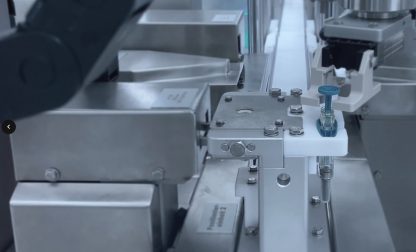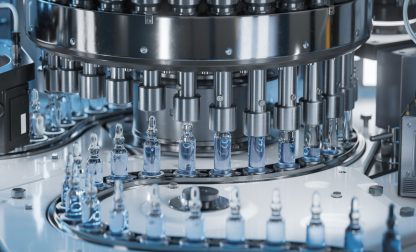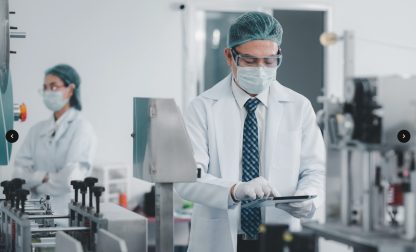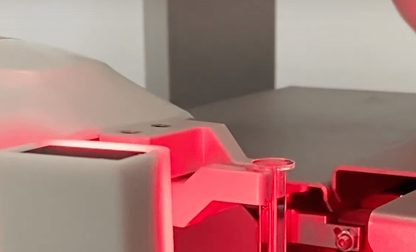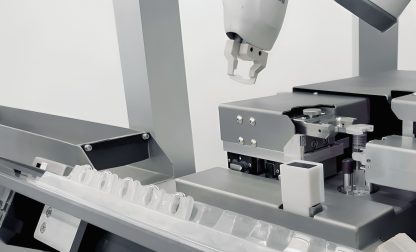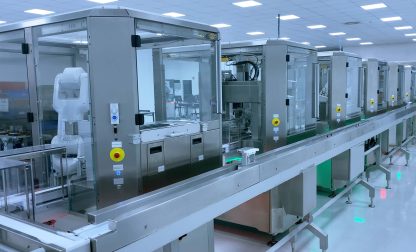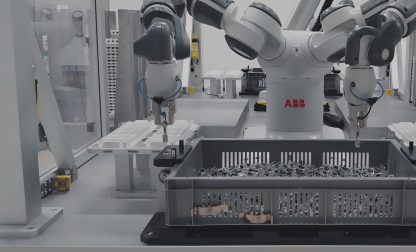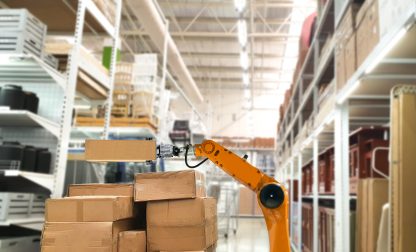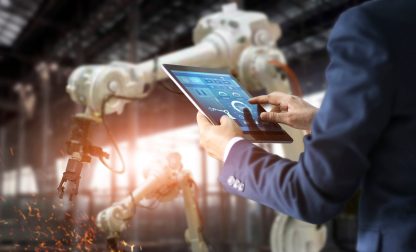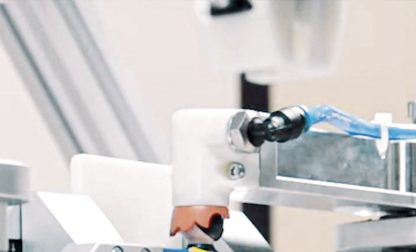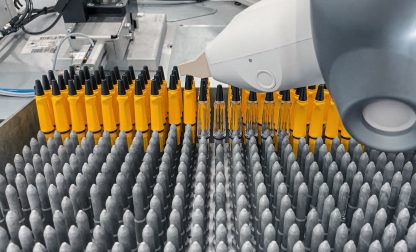Challenges & Benefits of Robotic Manufacturing
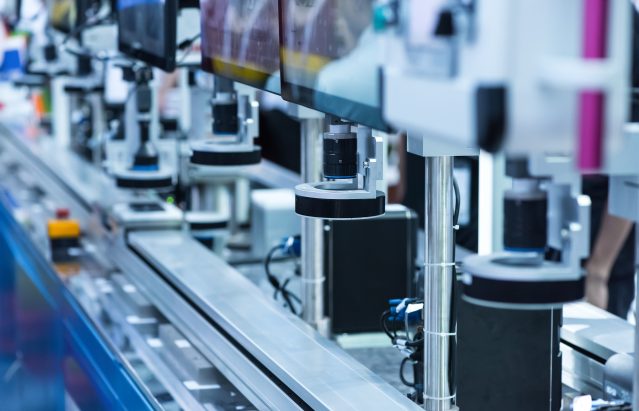
Robotic manufacturing is on the rise.1 Industrial robots are used throughout different industries to perform repetitive, strenuous and dangerous tasks. At the same time, they reduce labor costs and have the potential to increase workplace safety.
While automation can significantly improve production times and streamline manufacturing cycles, industrial robots are often simply needed to replace a lack of workforce. The use of industrial robots has a longer tradition in large-scale productions and is making its way into smaller to mid-scale businesses as well since automated solutions become more obtainable.
In the following, we’ll take a closer look at the benefits of robotics in manufacturing and how they help manufacturers meet demands and stay competitive. Further, we will carve out possible disadvantages to consider before taking the step and making an investment.
Benefits of Robotics in Manufacturing
The use of robots in manufacturing processes has proved valuable throughout a broad spectrum of industries. The advantages of robotics reach from the reduction of human errors to safer work environments and reduced labor costs.
Especially, production processes in the pharmaceutical industry can profit from new advances in the robotic industry that allow for automated quality control, repeatability, and the relief of human workers from dangerous tasks, like the handling of hazardous substances.
- Increased productivity and consistent quality
- Cost reduction
- Enhanced flexibility
- Improved worker safety
Increased productivity and consistent quality
The initial investment in automated systems has proven itself to be valuable throughout various industries. Robots are able to perform tasks reliably at high speed and produce consistent product quality. New technologies have the potential to increase production output while lowering operating costs at the same time. With a significantly lower risk for mistakes and product loss, the use of robotic automation has the potential to achieve a higher return on investment for companies in different sectors.2
As there is a severe lack of workforce in many industries due to a change in demographics, manufacturers are often not able to meet growing demands without relying on the help of robotics. With many young people starting to work later in life, there is a need for automation to meet the evolving opportunities in different sectors with a lot of growth potential, like the healthcare sector for instance.
Reduced production costs
If robots are used to replace or support manual labor, this can reduce cycle times significantly. As robotic systems do not require breaks or sleep, which makes it easy for manufacturers to up their production output and conversions.
Collaborative robots have the potential to free workers from strenuous tasks and make space and time for other steps that require attention, saving costs by streamlining the process.
Enhanced flexibility
In different industries, there is an increased need for flexible solutions that meet specialized customer demands and allow manufacturers to stay competitive. One example is the healthcare sector, which relies on new advances and research. Manufacturers need to be able to provide customized products as well as producing on a large-scale.3
As requirements for the production of pharmaceuticals can change over time due to an increase or decrease in demand, automated drug manufacturing systems need to offer flexibility. This is why scalable products like the ADVANCED Robotic Workstation by ESSERT are highly scalable and adaptable to different production methods.
Improved worker safety
In many cases, robotic systems relieve workers from repetitive tasks that are prone to mistakes and pose serious health risks.4 Production lines in different manufacturing industries require constant vigilance, a goal which is initially hard for human workers to achieve. While human errors do not only lead to product loss in many cases, they pose a danger to workers and their co-workers.
Automation solutions like robotic arms with integral control systems can be programmed to perform dangerous and tiresome tasks and increase workplace safety. With the help of robotics, workers don’t have to work in hazardous environments and under strenuous conditions like hot and dusty production halls.
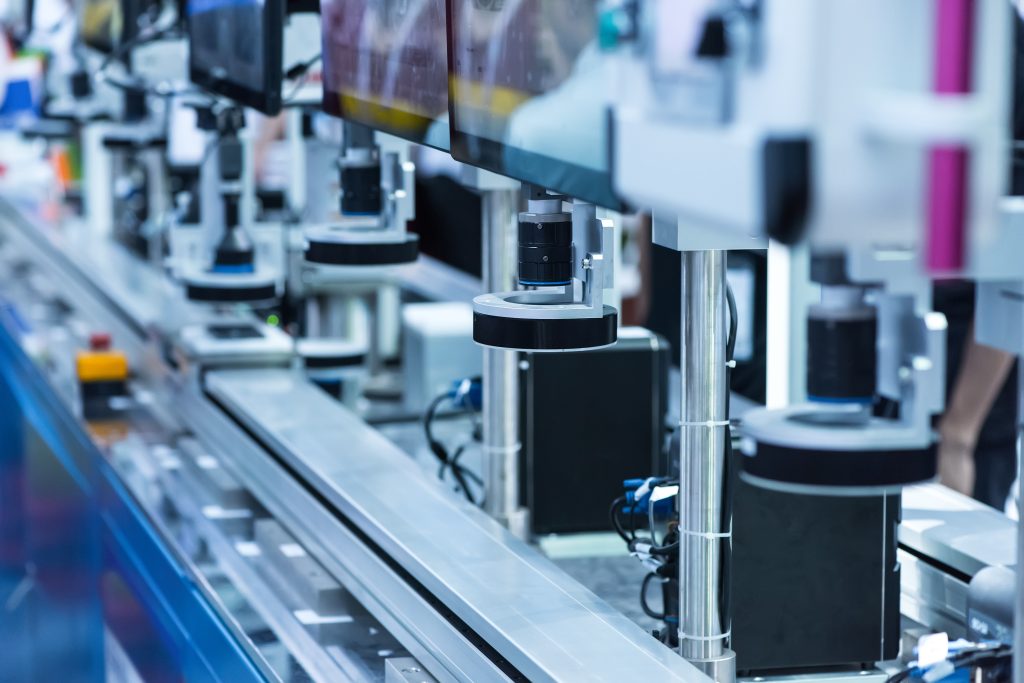
Challenges in Robotic Manufacturing
While there are many advantages to using automated systems and artificial intelligence in manufacturing processes, their implementation does not come without challenges. There are some possible disadvantages as well, that should be taken into consideration as well. These considerations are:
- investment costs
- Required expertise
- Maintenance
Investment costs
Even though the use of robots in manufacturing pays out in the long run, it is true that an investment needs to be made first. Depending on the branch you’re in, automated systems may require a rather high initial investment. Costs include first time installment, configuration by an expert and can rise even higher if any further modifications are needed in the future and the model is not laid out for this case.
Required expertise
Most robotic manufacturing solutions require skilled personnel. Robots require regular maintenance and have to be programmed for effective use, so it’s important to have experts for these jobs at hand. In some cases, you will have to train your own staff to do it, which can be a costly operation.
Maintenance
To run properly, robotic systems require maintenance and servicing. Even though many industrial robots already use machine learning with artificial intelligence, the costs for unplanned downtime can be higher than manufacturers initially expect when they make an investment. It is therefore essential to be informed about the whole process when switching to automatic systems in the workplace.
Why it Pays Off to Switch to Industrial Robots
New challenges call for new solutions. As pharmaceutical manufacturers see themselves confronted with problems like bottlenecks due to geopolitical changes, there is a trend to move from centralized production sites to smaller decentralized manufacturing. This way of producing relies on new, automated systems to allow companies reach competitiveness.
While there is a significant shortage of workers in the industry due to demographic changes, fully automated solutions and cobots provide the answer to this issue by replacing tiresome manual labor.
Another new challenge of the healthcare sector is the growing demand for personalized medicine, which is labor-intensive and difficult to produce efficiently. This is why advanced technology is needed to minimize the risk for human errors and product loss and helps to prevent bottlenecks through scalability.
Automated solutions by ESSERT Robotics address these needs through scalability, flexibility, and overall increased efficiency. Future oriented, highly scalable production lines like ESSERT MicroFactory have been designed to meet the challenging demands of high mix/low volume productions.
Sources
- Rise of the robots raises a big question: what will workers do? The Guardian. https://www.theguardian.com/technology/2023/jun/24/rise-of-the-robots-raises-a-big-question-what-will-workers-do ↩︎
- Bard, J.F. An assessment of industrial robots: Capabilities, economics, and impacts. Journal of Operations Management, 6: 99-124, 1986. https://doi.org/10.1016/0272-6963(86)90020-3 ↩︎
- Kustak, Andrew. Flexible manufacturing systems: a structural approach. International Journal of Production Research, 23:6, 1057-1073, 2007. https://www.tandfonline.com/doi/abs/10.1080/00207548508904765 ↩︎
- Matheson, E.; Minto, R.; Zampieri, E.G.G.; Faccio, M.; Rosati, G. Human–Robot Collaboration in Manufacturing Applications: A Review. Robotics 2019, 8, 100. https://doi.org/10.3390/robotics8040100 ↩︎
